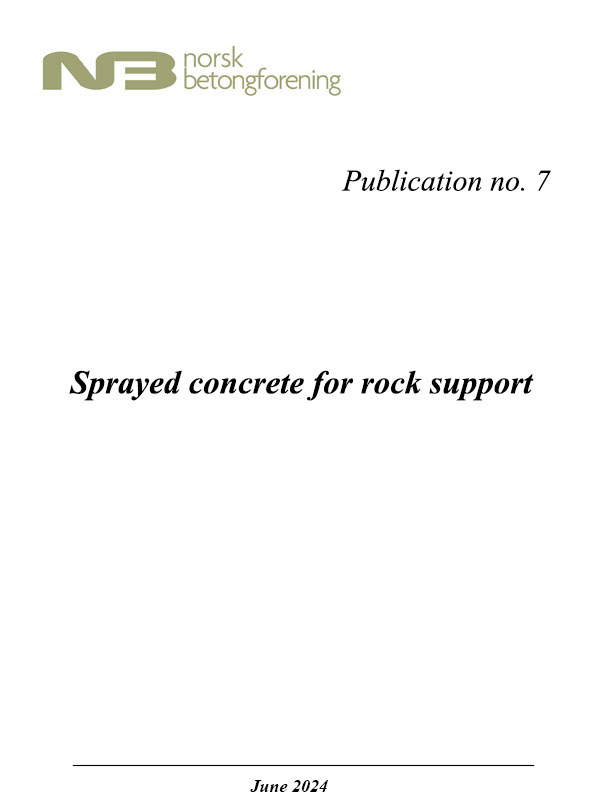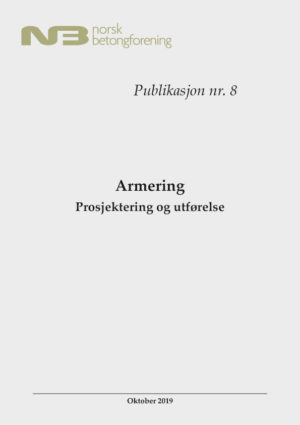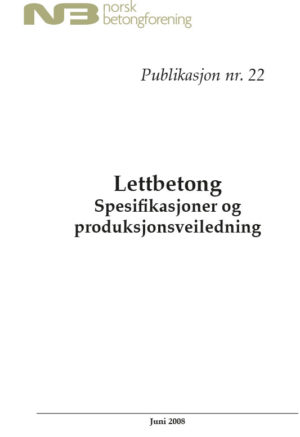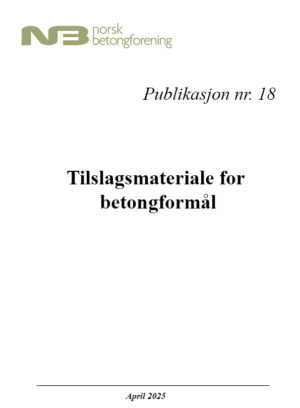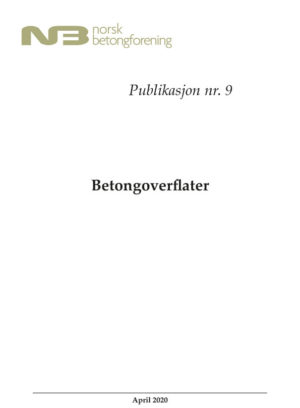Beskrivelse
Sprayed Concrete for Rock Support (2024) – Free downloading of Attachment no. 1, click here
This edition of the Norwegian Concrete Association Publication no. 7 «Sprayed concrete for rock
support» is an English translation of the Norwegian edition from December 2022 (which replaced the
2011-edition).
The common European standards covering sprayed concrete include both the dry- and wet mix
methods, used for all purposes: securing and reinforcing rock and soil, free-standing structures, as
well as repairing and upgrading existing structures. This breadth means that the standards are, to
some extent, not specific and consequently contain compromises, as well as rules that do not apply
to rock support. Those who are only interested in rock support (which can rightly be characterized as
a separate field of expertise) will have to assess and filter out what is relevant. Despite the standards,
Publication no. 7 is considered particularly useful. The publication is offered to those who want a
comprehensive presentation of the requirements for wet mixed sprayed concrete used for rock
support.
General adjustments and updates have been made based on experiences and developments since
the previous revision in 2011.
Chapter 1 Specification and chapter 2 Test methods are closely related and are relevant as
description in a contractual context. In addition, two chapters are added for guidance; chapter 3
Guidance for the design of sprayed concrete for rock support, and chapter 4 Guidance for the
specification of sprayed concrete. To facilitate navigation between chapter 1 and chapter 4, any given
topic at a sub level in chapter 1 is also treated at the same sub level in chapter 4. For example,
chapters 1.3 and 4.3 are both called «Materials properties.»
Significant changes from NB7:2011 are:
Chapter 1 Specification
All requirements and requirement-like formulations relevant to specification have been moved to
chapter 1. Text of a more informative nature in chapter 1 has been moved to guidance in chapter 4.
Quality control and control frequencies:
• Compressive strength: For the contractor, there is no requirement for testing the
compressive strength of cast cubes. Control of compressive strength (and density) at the site
is linked to cored cylinders from finished sprayed concrete. For Execution class 3, the testing
frequency has been increased.
• Control of fibre content and distribution: Initial testing and conformity control now refer
entirely to NS-EN 206+NA. However, there are exceptions for the concrete mix used for
spraying panel samples for determination of energy absorption capacity; for these, the fibre
content and fibre content distribution must be determined on samples from the same truck,
regardless of the method of fibre addition. This control is part of the contractor’s identity
control.
• Energy absorption: When selecting fibre dosage at the start, based on pre-documented
results, recommended margins for the relevant E-class are moved to the guidelines. It is up
to the contractor to assess a sufficient margin to achieve the required energy absorption
specified for the project. What constitutes a deviation has been clarified.
• Bond control: Previously described as a monthly control, now specified more clearly as
minimum one blow per 20 m2.
• Thickness: Previously described as a monthly control, now specified more clearly as 10
measurements over the profile for every 1000 m2.
Curing measures: What was previously referred to as internal curing is now called bond-improving
additive. In contrast to the term internal curing, bond-improving additive is defined in the standard
NS-EN 934-5 with requirements for the declared properties.
Chapter 2 Test methods
Minor adjustments only. Requirements are moved to chapter 1.
Chapter 3. Guidelines for structural design of sprayed concrete for rock support – geological
engineering and rock mechanic evaluations
Guidelines for structural design are now covered in a separate main chapter. The subject has been
generally updated.
Chapter 4. Guidelines for specification of sprayed concrete
• Protection against water, frost and fire is not a main subject in this Publication. However, such
sprayed concrete works include some elements that it is useful to inform about, which is why
the subject is included.
• A section on rock support of tunnels in operation is included.
The content of previous Attachment 1 has been integrated into this Publication.
The Committee has consisted of:
Brede Nermoen, Bane NOR
Christine Hauck, Veidekke Entreprenør
Jan Erik Hetlebakke, Entreprenørservice
Karl Gunnar Holter, The Norwegian Geotechnical Institute
Ove Ugelstad, Nordic Concrete Group
Synnøve A. Myren, Norwegian Public Roads Administration, Road Directorate
Thomas Beck, Mapei
Tom Fredvik, Heidelberg Materials Cement Norway
Truls Krossøy, Ølen Betong
Øyvind Bjøntegaard, Leader, Norwegian Public Roads Administration, Road Directorate
Oslo, June 2024
Norwegian Concrete Association

